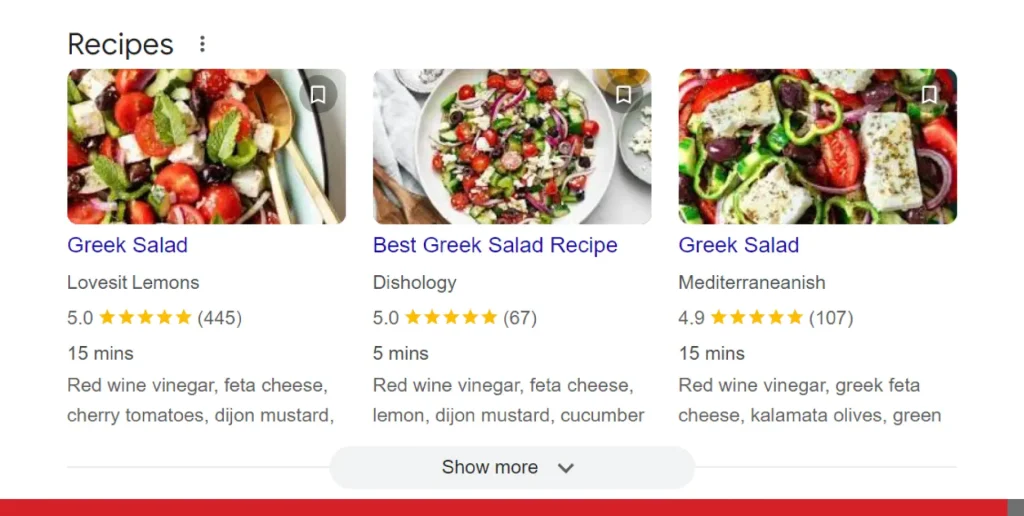Search Engine Optimization, or SEO, is a well-known tech jargon you might be familiar with when working on your website. But what if we told you there’s SEO in other areas, like videos, and that you will need to create videos that are optimized for search engines?
Well, in 2024, with video streaming platforms like YouTube, TikTok, and Instagram growing daily and the need to create video content on your own site, it’s no longer just about creating high-quality videos. You need to ensure your videos are discoverable when people are searching for them. That’s where Video SEO comes in.
In our article, we’ll explain some essential steps to master video SEO for videos on popular platforms or your own website and ensure that your content reaches the right audience.
- What Is Video SEO?
- Why Would You Need to Focus on Video SEO?
- The Most Notable Elements of Video SEO
- Enhancing Video SEO with Technical Optimizations

What Is Video SEO?
Video SEO (Search Engine Optimization) refers to the process of optimizing video content from a website to rank higher in search engine results. It applies to content uploaded to your own website and popular video-sharing sites like the ones mentioned above. Among other things, it also involves various techniques to optimize your video for better search engine ranking.
Like traditional SEO, this includes optimizing a few things like:
- Titles
- Descriptions
- Keywords
With video SEO, you’re optimizing not just for Google search results but for video-specific search engines like YouTube, Google, or Bing as well.
Tip: Bing search is fairly effective in sweeping the internet for video content, making it a perfect alternative to Google or YouTube.
On video-sharing sites like YouTube or Facebook, video SEO is a far easier process to master as most options are visible from within their back-end systems. On your website, this depends on which CMS you use to maximize your exposure.

Why Would You Need to Focus on Video SEO?
As video consumption continues to rise on most social media platforms and websites, standing out among the competition with your own content becomes an increasingly difficult task.
Optimizing your videos ensures you reach your target audience by boosting engagement and ultimately ranking videos higher in search results whether you’re a content creator, a business owner, or a digital marketer.
Here are a few key reasons to focus on video SEO:
- Massive growth in video consumption: People watch over a billion hours of video on YouTube every day. Also, almost half of the internet’s users utilize YouTube every month.
- Competitive advantage: SEO can help your video stand out in a saturated market, but it can help you massively if your competition lacks the resources to do so.
- Increased traffic: Well-optimized videos have a better chance of appearing in both video and web searches because video is generally more appealing to users.
Important Video SEO Statistics
Statistics supporting these statements say that a brand’s video quality impacts 87% of consumers, while the most powerful content sticks in their minds. What’s even more interesting for SEO video marketing experts is that viewers remember 95% of a message when the content is in video form rather than in plain text.
Additionally, online video makes up 82% of all internet traffic and continues to rise year on year. This aligns with the rise in platforms like TikTok, YouTube, and Instagram, which have transformed how users consume content, especially after the COVID-19 pandemic, making ranking videos more crucial than ever.
YouTube search is officially the second-largest search engine worldwide, meaning that if something isn’t on Google, then it’s probably on YouTube. Alphabet, the parent company of Google, owns both websites.
According to research, videos are 50 times more likely to rank on Google search results, which means that opting for video content next to your regular one increases the chances of your brand appearing on other media formats.
How Video SEO & Video Marketing Help Your Business Depending on Your Industry
Depending on your niche, video SEO can have a unique impact on your business:
- eCommerce: Product demo videos and reviews on Instagram or the website itself can drive sales by ranking higher in Google and YouTube video searches.
- Educational content: Tutorials and how-to videos become more discoverable, leading to increased views and shares.
- Entertainment and media: Higher rankings lead to more exposure, more subscribers, and ultimately more ad revenue.
- Service-based businesses: Explainer videos optimized for local SEO can help potential clients find you more easily.
Is Video SEO Different than Traditional SEO?
While traditional SEO focuses on text, blogs, images, and web pages—video SEO is centred around multimedia. Both require keyword research, but video SEO also involves optimizing thumbnails, closed captions, and engagement metrics like watch time. This makes YouTube SEO (or any other video platform) a specialized subset of video SEO.
In short, if your strategy only includes traditional SEO, you could be missing out on significant opportunities to rank videos and increase your digital presence. And you will miss these benefits, regardless of where you host your videos online.
To help with your SEO strategy, EasyHosting’s Search Engine Assist analyzes your website to determine its keyword ranking, helping you to pinpoint every area for improvement.
For more information on our web solutions, please email us at support@easyhosting.com or call us on 1-888-390-1210.

The Most Notable Elements of Video SEO
To improve your video SEO results, there are several components you must consider:
1. Video Title Optimization
Your video titles should be catchy and incorporate your target keywords. It’s the first thing users (and search engines) see, so make sure it’s relevant to your audience.
2. Keyword Research and Placement
Just like with a blog post, you need to research video-specific keywords. Tools like TubeBuddy or VidIQ can help identify relevant keywords for your niche. ViewStats is another good option for checking out channel statistics and other related data.
3. Video Description Optimization
Your video descriptions should provide context, include keywords naturally, and explain what the video is about. A well-written description can boost your ranking and help viewers decide whether or not to click. Similarly, a metadata description on your site or a brief text regarding your video—inside the web page—can help search engines better understand what the video is about.
4. Video Thumbnail Optimization
Thumbnails are often the deciding factor for clicks. Make sure your thumbnail is eye-catching, relevant, and designed to encourage clicks. Including text on the thumbnail can also improve engagement in many cases. YouTube’s encouragement of sensational and captivating thumbnails has created a whole culture in thumbnail creation, with the famous ‘arrow’ appearing on thousands of thumbnail images on the platform.
And because thumbnails are very important to get the first click, YouTube now provides an A/B testing feature for trying out different thumbnail images on different audiences, so you won’t miss a click.
5. Video Tags Optimization
Adding video tags is crucial for increasing the visibility of your videos in online searches. Make sure to include relevant tags that accurately describe the content of your video to help search engines identify, display your content, and offer better suggested videos.
Enhancing Video SEO with Technical Optimizations
1. Closed Captions & Video Transcripts
Including closed captions and transcriptions in your videos can significantly boost your SEO performance. These elements allow search engines not only to understand the content of your video and improve its discoverability, but also to make your videos more accessible.
2. Multilingual Videos & Accessibility
If your audience is global, consider creating multilingual videos with translated captions. This helps your content reach international viewers and allows your videos to rank for different languages and regions. Prioritizing accessibility, like including subtitles for the hearing impaired, can improve your video SEO by catering to a much wider audience.
3. Video Compression & Load Times
When hosting videos on your website with your business domain, optimizing video compression and load times is critical.
A large video file can slow down your site, negatively impacting your SEO rankings. Tools like HandBrake or Adobe Media Encoder can help you compress your videos without sacrificing quality, ensuring fast load times that benefit both user experience and search engine rankings.
4. Using Structured Data for Video SEO
When it comes to working with videos that are uploaded on a website, structured data (or schema markup) helps search engines understand your video better. Using schema markup to categorize your videos can increase the likelihood of them appearing in rich snippets on Google, and avoid issues like competing against similar videos on multiple pages.

5. Video Sitemaps: Why They Matter for SEO
A video sitemap is an XML file that helps search engines find and index your video, improving video search results. Submitting your sitemap to Google Search Console increases the chances of your video showing up in search results so that search engines can find and rank your content.
6. Best Video Hosting Options for YouTube SEO
Where you choose to host your video also impacts SEO performance. YouTube is the largest player in the field, but hosting on your own website can provide SEO advantages, especially if your goal is to drive traffic directly to your site. Choose the platform that aligns with your strategy.
7. How Video Length Affects SEO Performance
The length of your video can influence its ranking potential, but it heavily depends on your target audience.
Short videos may lack depth, while overly long ones risk losing viewer attention. Aim for a 6-12 minute range to strike the right balance on most platforms, keeping viewers engaged and satisfied.
8. Boosting Video SEO with Engagement Metrics
Metrics like watch time, click-through rate (CTR), and engagement (likes/dislikes) are critical for SEO.
The more time users spend watching your video, the better it will perform in rankings. To improve these metrics: create compelling videos condensed with information, use strong calls to action, design engaging thumbnails, and consider creating themed playlists that can engage viewers across multiple videos.

Img alt: Back view of a developer using a laptop with SEO performance written on the screen
Final Words
In 2024, video SEO is more important than ever before. By optimizing your videos for search engines, you increase visibility, engagement, and traffic. All of these factors will help your content reach the right audience.
Leveraging video SEO will set you apart in a highly competitive digital landscape, whether you’re a business owner, content creator, or marketer.
Remember that EasyHosting is your trusted partner, offering online guidance and support for every small business.
For more information on our web solutions, please email us at support@easyhosting.com or call us on 1-888-390-1210.
Frequently Asked Questions
How long does it take to see results from video SEO?
It can take anywhere from a few weeks to several months to see significant results, depending on the competitiveness of your niche.
Does video SEO apply to social media platforms?
Yes! Video SEO is crucial for platforms like YouTube, but it also applies to videos on social media platforms like Facebook, Instagram and even more so on your own website.
What’s the difference between optimizing for YouTube and Google?
While both platforms value engagement metrics, YouTube places more emphasis on watch time and viewer retention. However, Google looks at overall SEO optimization, including your website’s authority.
Should I focus on video SEO for all video content?
It depends on your goals. If your video content aims to drive traffic, generate leads, or increase brand awareness, then yes, video SEO should be a priority.
Can video SEO help small businesses?
Absolutely! Optimized video content can help small businesses increase their online visibility and reach a broader audience without massive paid video advertising budgets.
How does localization impact video SEO?
Localization can have a significant impact on video SEO. By tailoring your video content to specific regions and languages, you can increase your chances of ranking in local search results.
This includes using translated subtitles or voice-overs, creating region-specific metadata, and optimizing for local keywords. Search engines tend to prioritize content that is relevant to a user’s location, so localized videos can help you reach international audiences and improve engagement.
What tools can help you measure video SEO success?
There are several tools available to measure the success of your video SEO efforts. Popular options include:
- TubeBuddy and VidIQ: Both are YouTube-focused tools that help with keyword research, tag optimization, and competitive analysis.
- Google Analytics: Helps track traffic and engagement metrics for videos hosted on your website.
- Ahrefs and Semrush: Provide comprehensive insights into how your videos are performing in search results and help track backlinks to your video content.
- YouTube Studio: Provides detailed analytics on watch time, viewer retention, and traffic sources for YouTube videos.
Can live streaming be optimized for SEO?
Yes, live streaming can be optimized for SEO. To do this, ensure that your live stream has a well-optimized title, description, and relevant tags. Additionally, you can promote the live stream in advance to generate interest and engagement, which will help it rank higher during and after the broadcast. Once the live stream ends, upload it as a video-on-demand (VOD) and optimize it further with transcriptions, timestamps, and closed captions to maintain SEO benefits.



